3. Blogging Platforms
The first step of creating a blog includes choosing a blogging platform. A blogging platform is a software you use to create a blog and publish content. It is a type of content management system (CMS). Multiple blogging platforms are available online which offer a set of blogging tools and services providing everything you need to set up and run a blog. A platform can be free or paid.WordPress
Over 15 million websites on the internet use WordPress, which is almost 30% of all websites worldwide, making WordPress the most popular CMS platform. There are over 76 million wordpress.com blogs. The principal two reasons for such a huge WordPress popularity is that this is a user-friendly and search engine friendly platform. This means that you do not need much experience in coding or web design to create a WordPress blog. Also, the platform supports a lot of plugins and extensions to optimize the blog even more and add features that are not a part of the core platform. As a result, search engines find it easy to index such a website and present them to their users as a response to a search query. If you are interested in exploring WordPress as a platform, you will have two options to choose from: WordPress.com and WordPress.org. The platform is the same in both cases, but these represent two different solutions for bloggers.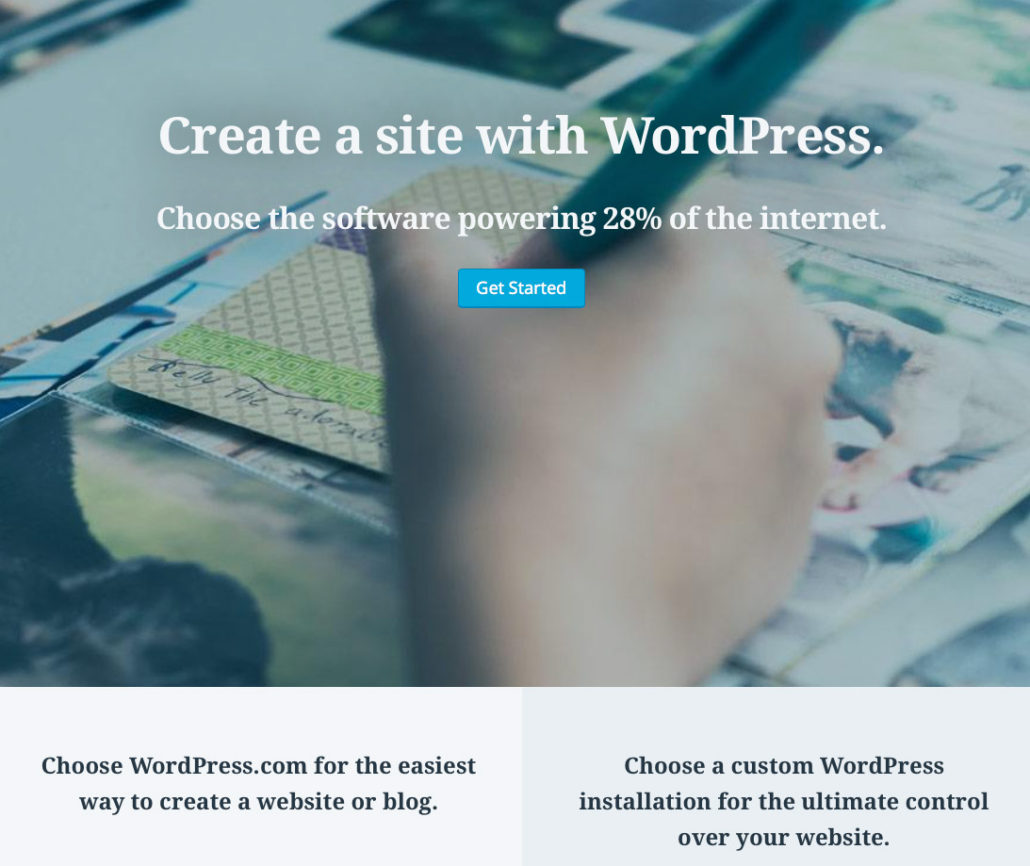
Images: https://wordpress.com/com-vs-org/
WordPress.org
With this option, you will be hosting your own website or a blog. By visiting WordPress.org, you download the free software which needs to be installed on your web server. After this, you will be able to set up and customize your blog. This solution is a good choice if you want to have more control over your blog and flexibility when it comes to blog design and optimization. However, this comes with an added cost of blog hosting. You will also need technical know-how to install this blogging platform on the server. Even though this is not too complicated, it still can be a bit too much for someone who has no experience with it.WordPress.com
If you want a blog without having to take care of hosting and web server installation, you will use the WordPress.com option. To create this blog, you will visit the homepage of WordPress.com and register for an account, which will take a couple of minutes. The pros of using this blogging platform include a free and quite straightforward setup, which is perfect for beginners. The platform also offers several paid upgrades, such as domain registration (allowing you to remove wordpress.com from your domain name), but in all, this option provides much less ability to customize and control the platform. Choosing between these two depends on the goals you have with blogging. If you have a personal blog, the free option without your own hosting can be enough to help you transfer your vision to a blog. Still, you have to be aware that this option comes with lots of limitations. If your plan is blogging for business, earning money through blogging and expanding your blog (by adding new authors, a management team, subscriptions, etc.), you should use WordPress.org from the start. Some of the reasons why bloggers choose the WordPress platform (both .com and .org) include the following:- The platform installation, management, and optimization do not require a lot of technical skills
- It integrates well with social networks and other platforms such as marketing automation software, email marketing software, e-commerce website, etc.
- There are lots of plugins to optimize the blog and upgrade its features
- The platform is intuitive and easy to get used to
- It is known to be a very secure platform
- Numerous options for customization and plenty of templates are available
- There is a strong online community which is great for getting help and support
Blogger
This is another popular blogging platform. It is hosted by Google and allows creating blogs with blogspot.com used as a part of the domain name. A custom domain can also be registered to remove the blogspot.com from the name and Google allows this for free. To create the blog using this platform, you will need a Google account.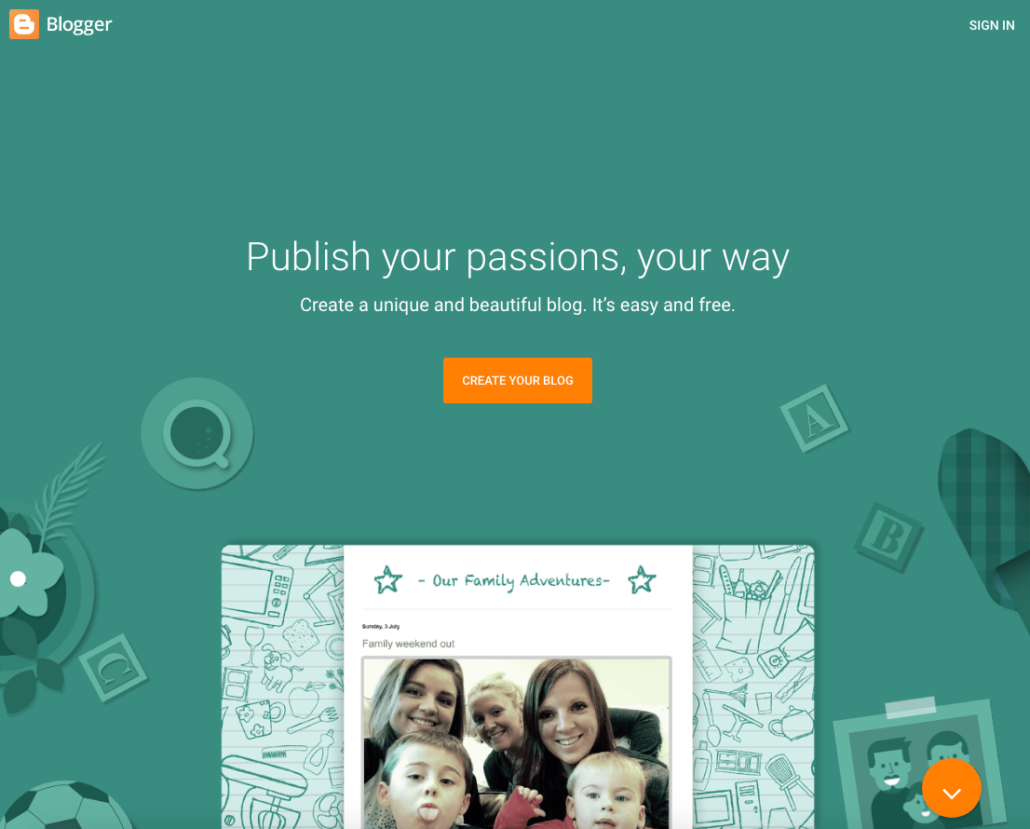
Image: https://www.blogger.com/
An opportunity to create a blog for free and to easily set up the blog are common reasons for choosing this blogging platform. However, this solution offers fewer options for customization with hardly any blog templates to choose from. Blogger provides some of the following features:- Adding location to posts through geotagging options
- Country-specific extension in the URL
- Blog is hosted on Google servers, which are considered as very reliable (but offers no option to upgrade to self-hosted solution)
- Drag-and-drop templates editing interface
- It supports Google’s AdSense service enabling bloggers to generate revenue from blogging
- It can be easily integrated with Google+ encouraging user engagement
- Mobile application is available for blog management
- Blog description is limited to 500 characters (HTML markup is not supported)
- Individual blog pages are limited to 1MB
- Blogger Product Forum offers online support
Tumblr
Here is another easy-to-use blogging solution which comes with no additional monthly costs. The platform itself is designed as a micro-blogging platform which features short-form blog articles, quotes, images, etc. The opportunity to follow other blogs and get followers gives that social flair, thus increasing the engagement level. In December 2017, Tumblr reports having over 381 million blogs.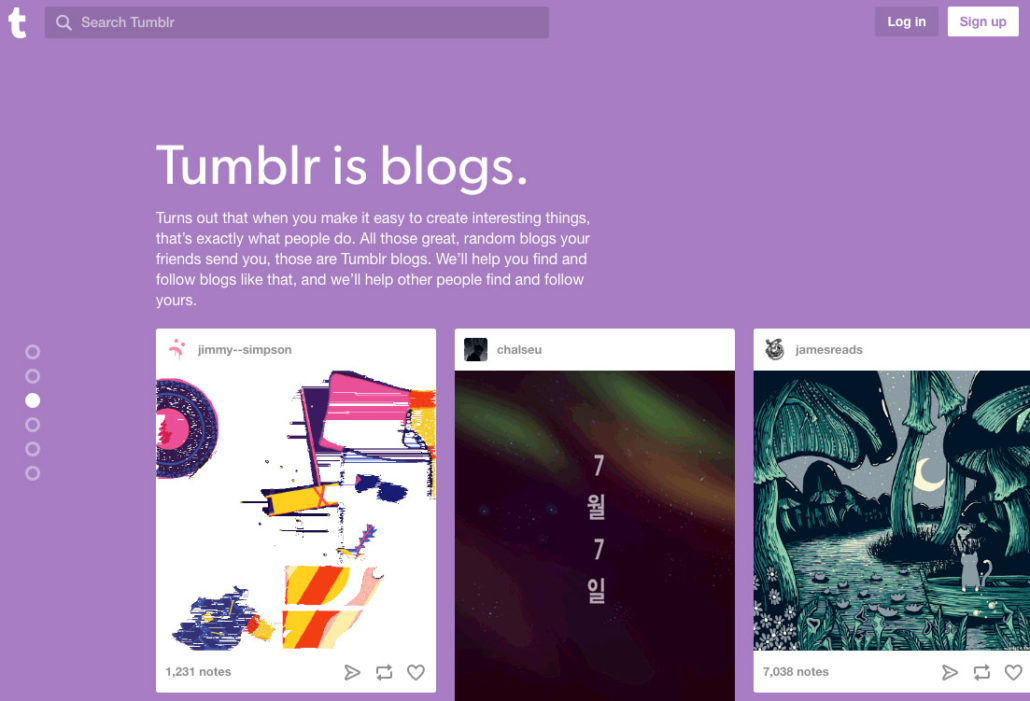
Image: https://www.tumblr.com/
When you register to the platform, you get a subdomain of tumblr.com. It is possible to remove this and use your own domain name, but you will have to register the domain name using another online service. Some of the highlights for choosing Tumblr:- Great interaction with Twitter and Facebook, so you can automatically republish on Tumblr or vice versa
- It is one of the fastest growing blogging platforms
- Plenty of opportunities for blog customization including a possibility for HTML editing
- Email or text publishing system allowing you to post quickly and easy
- Live feed shows recent blog posts of the users you follow which increases engagement and content visibility
- Tagging content increases the opportunity to get discovered
- Intuitive dashboard which is easy to figure out and use
LinkedIn blogging
The option to publish blog articles on LinkedIn opened up with LinkedIn Pulse, but as of the end of 2015, Pulse no longer exists as a separate platform. Instead, its core features and functionalities are integrated into the LinkedIn platform enabling articles and stories to be accessible directly from the news feed of a LinkedIn account.
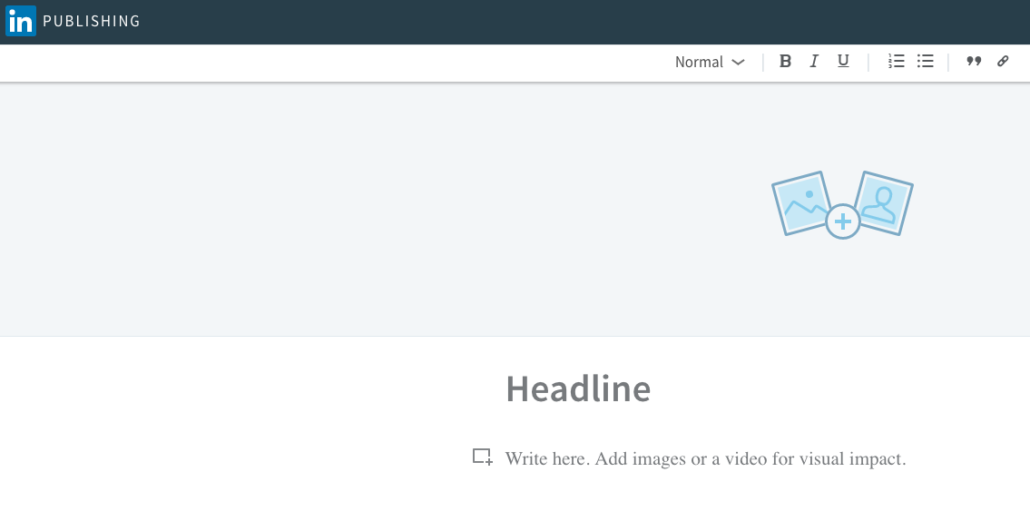 To start blogging on LinkedIn, all you need is a content idea, and to think how to shape this into an article people are going to read. Also, you will need a LinkedIn account.
You are literally one click away from getting your blog content published, and that is one of the main reasons for choosing such a way to blog. Other features of using the LinkedIn platform for blogging are:
To start blogging on LinkedIn, all you need is a content idea, and to think how to shape this into an article people are going to read. Also, you will need a LinkedIn account.
You are literally one click away from getting your blog content published, and that is one of the main reasons for choosing such a way to blog. Other features of using the LinkedIn platform for blogging are:
- Huge user base which is your potential audience
- Possibility to reach online users without any direct promotion from your end with social network visibility
- An opportunity to gain influence as a professional on the platform through valuable content
- Enrich your online portfolio with content publicly available on the network
- Extremely beginner-friendly
Medium
Medium is another free blogging platform enabling people to start blogging almost instantly. All it takes is to create an account and get started writing. The platform has an amazing import tool, supporting different content formats, easy inclusion of visual content and plenty of formatting options. All of this enables you to create very professional looking content and start gaining readers through the platform.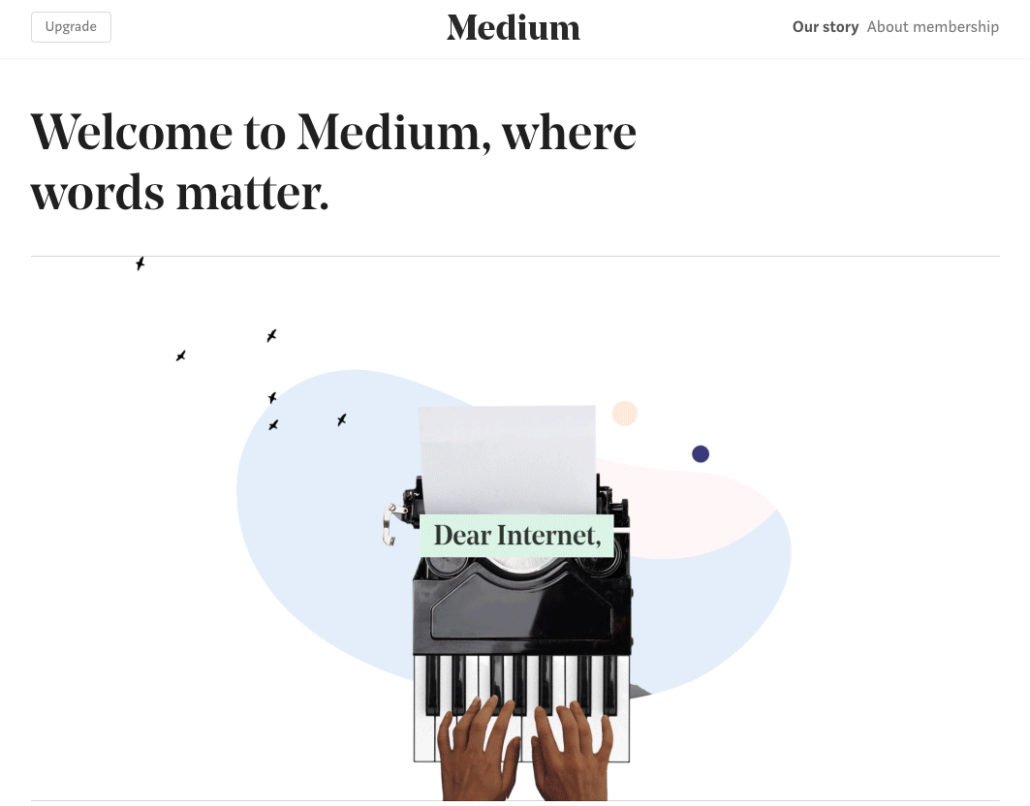
Image: https://medium.com/
Some of the reasons why people choose Medium for blogging include:- A huge base of followers
- It connects with your Facebook and Twitter account helping you find connections from other social networks
- This also helps with increasing the number of social followers
- Strong social aspect with features such as follow the author, bookmark the article, clap to show you like a story, etc.
- Engagement metrics for the articles
- Quite a straightforward platform with many formatting options and instant integration of visual content through a URL
